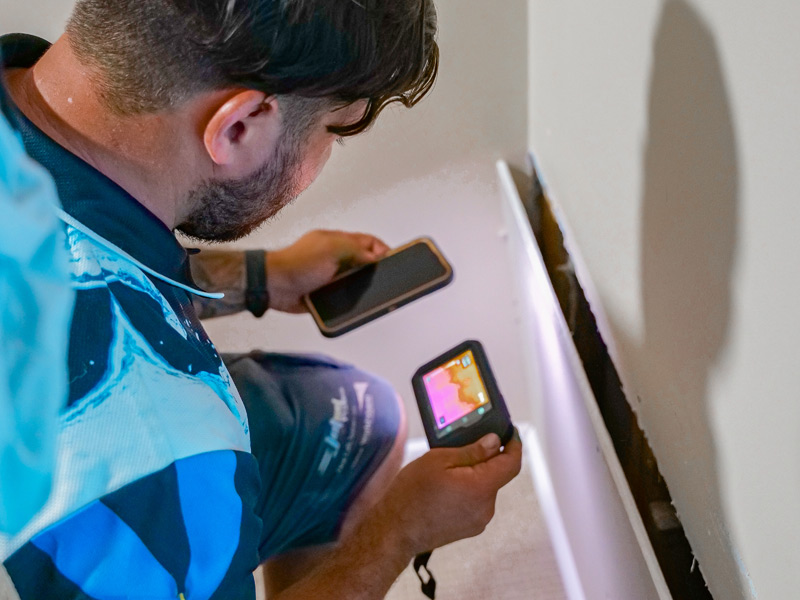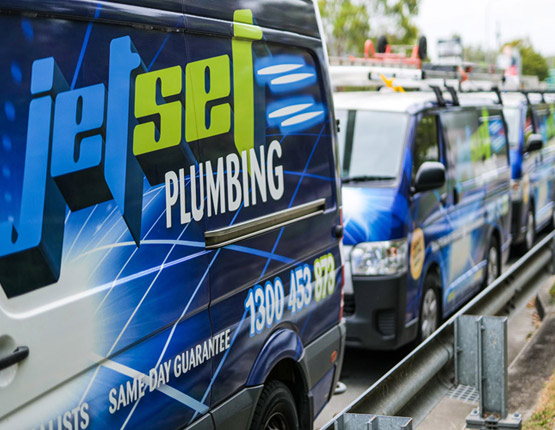Unveiling The Invisible: The Science Behind Leak Detection
Water is a precious resource, and the efficient management of it is crucial to our daily lives. In our homes, the detection of leaks plays a pivotal role in preserving water and preventing potential damage, but the task is no easy feat. Over the years, many innovators within the plumbing industry have sought to create new, fine-tuned methods for the leak detection process. As it stands today, Jetset Plumbing relies on two forms of cutting-edge technology-high-frequency ultrasonic listening devices and thermal imaging cameras-to accurately detect the leaks threatening your home.
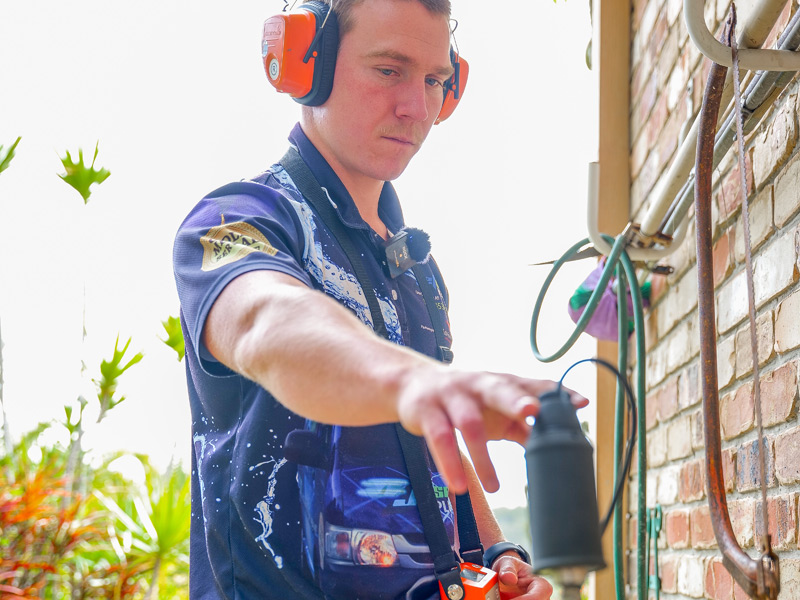
High-frequency ultrasonic listening devices are basically the superheroes behind leak detection, capable of hearing what the human ear cannot. These devices operate on the principle that most leaks generate high-frequency sounds, often above the range of human hearing. But how do they actually work?
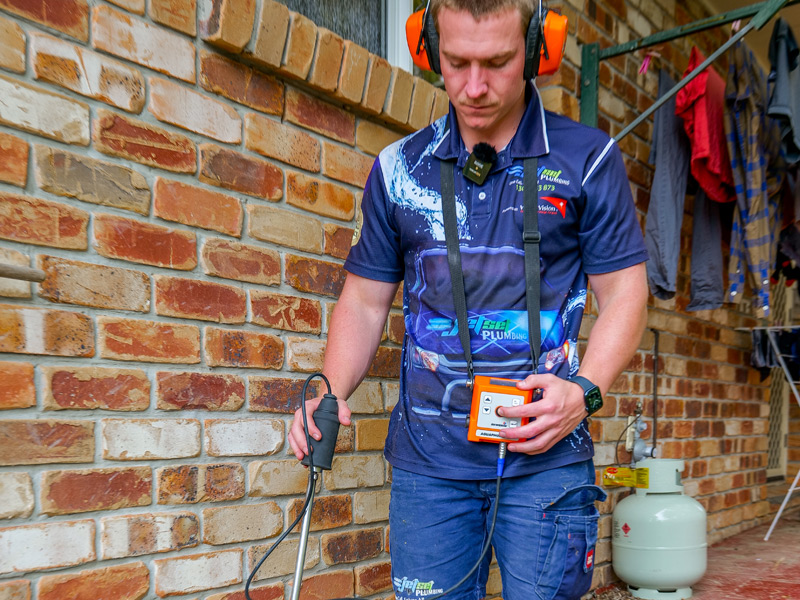
These devices are equipped with highly sensitive sensors designed to pick up ultrasonic frequencies. What's that? Well, ultrasonic frequencies are generally categorised as sounds measuring at 20 kHz or higher. Simply put, they are frequencies that aren't detectable by the human ear.
Building from this, these ultrasonic signals are then amplified, making them audible to the human ear. This amplification process ensures that even the faintest sounds associated with a leak become detectable.
The amplified signals are then analysed to identify sound patterns generally associated with leaks. Using this device, technicians can differentiate between normal background noise and the distinct sound signatures of a leak, helping them zero in on the problem areas.
Once the potential problem areas have been located, technicians will then move the ultrasonic listening devices around these suspected areas, listening for variations in sound intensity. This method helps pinpoint the exact location of the leak, whether it's in a pipeline, tank, or other concealed areas.
While ultrasonic listening devices focus on the sounds emitted by a leak, thermal imaging cameras take a different approach. This technology relies on temperature differences to reveal hidden leaks. Here's a breakdown of their functionality:
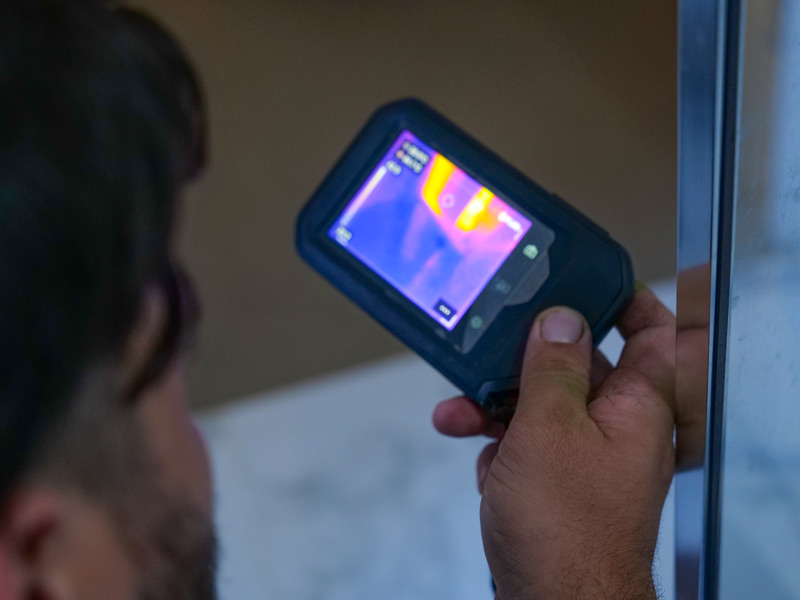
First, we need to understand what infrared actually is. Infrared refers to electromagnetic radiation with longer wavelengths than those of visible light, making it invisible to the human eye. In saying that, infrared can often be detected as heat, which is where these state-of-the-art cameras come into play. Thermal imaging cameras can capture the infrared waves emitted by objects. Conveniently, water leaks often cause temperature variations, as water absorbs and retains heat differently than surrounding materials, thus making them detectable.
The captured infrared images are translated into colour maps, with the different colours representing various temperatures. This visual representation makes it easy for technicians to identify anomalies associated with leaks.
Leaks result in the release of water, generally causing a localised decrease in temperature. Thermal cameras can highlight these contrasts, allowing technicians to identify the precise location of the leak. In some cases these visual temperature contrasts also allow the technician to pinpoint the cause of a leak, depending on whether the moisture is warm or cold.
Thermal imaging cameras also offer real-time monitoring capabilities, making them efficient for detecting leaks in complex systems or buildings with multiple potential trouble spots.
When it comes to leak detection, high-frequency ultrasonic listening devices and thermal imaging cameras stand out as invaluable tools. By harnessing the power of sound and infrared technology, these devices empower technicians to uncover hidden leaks swiftly and accurately, ultimately contributing to the efficient use of water resources and the prevention of costly damages. As technology continues to advance, the future of leak detection looks promising, with the potential for even more innovative solutions to safeguard our most precious resource, water.
